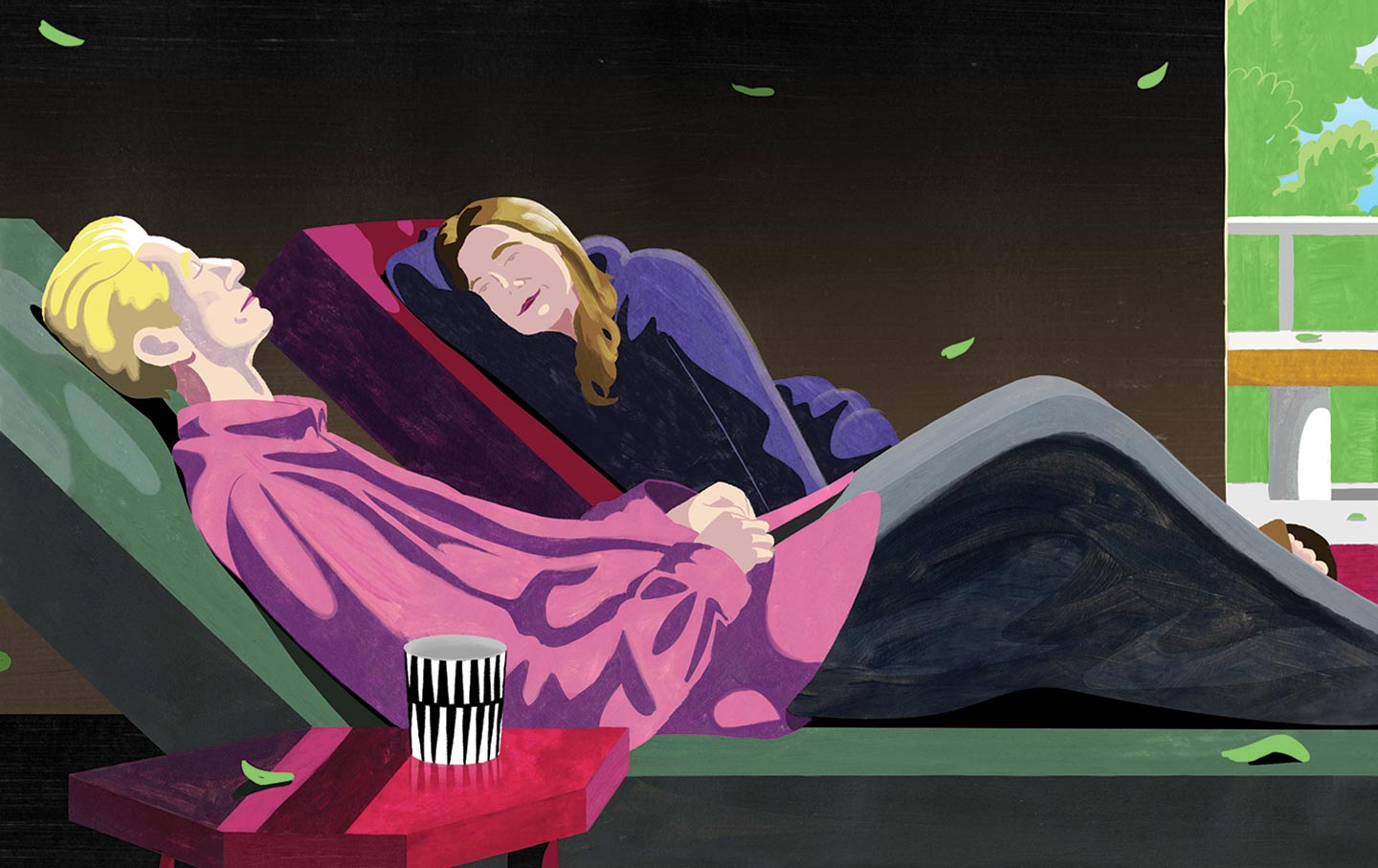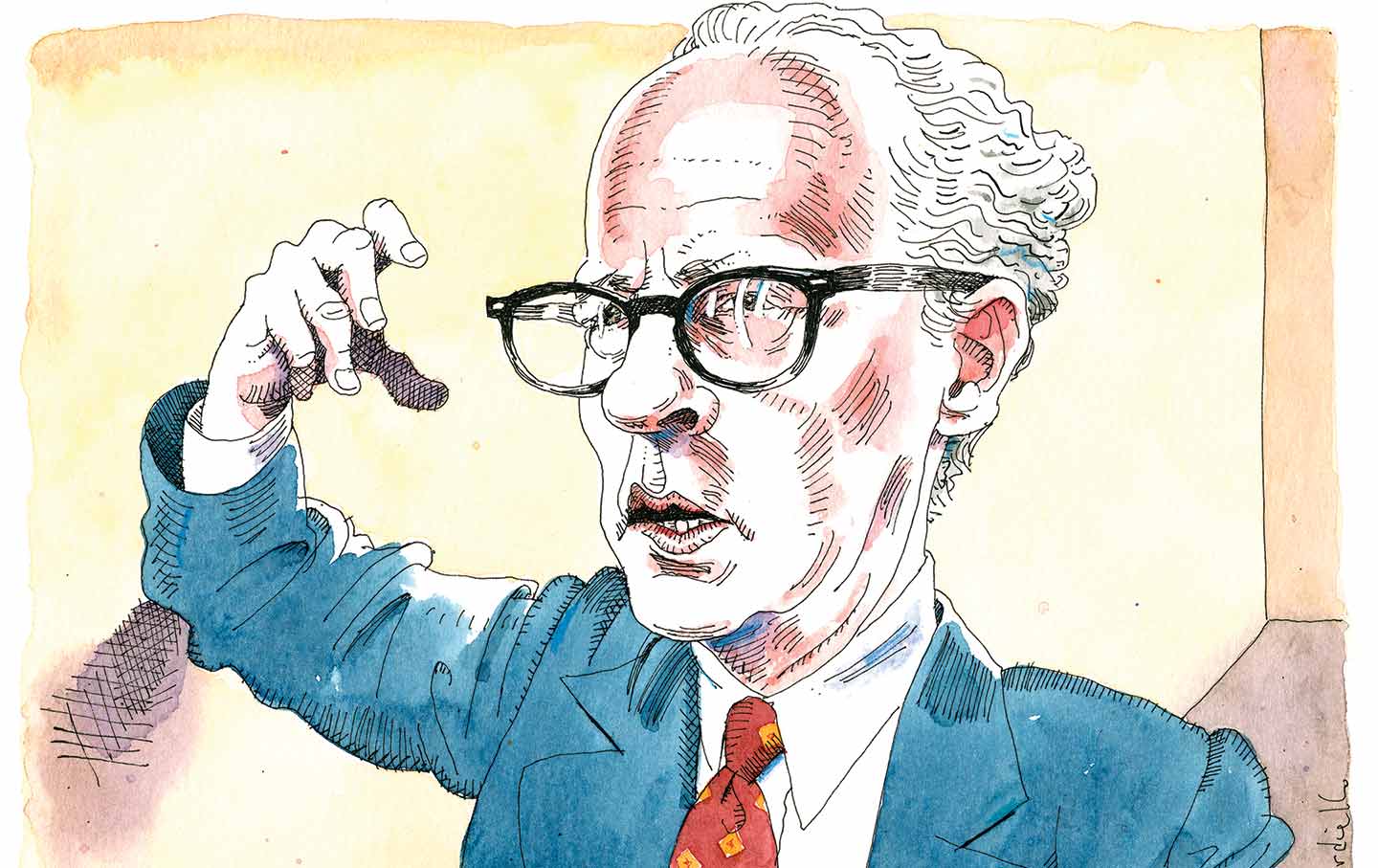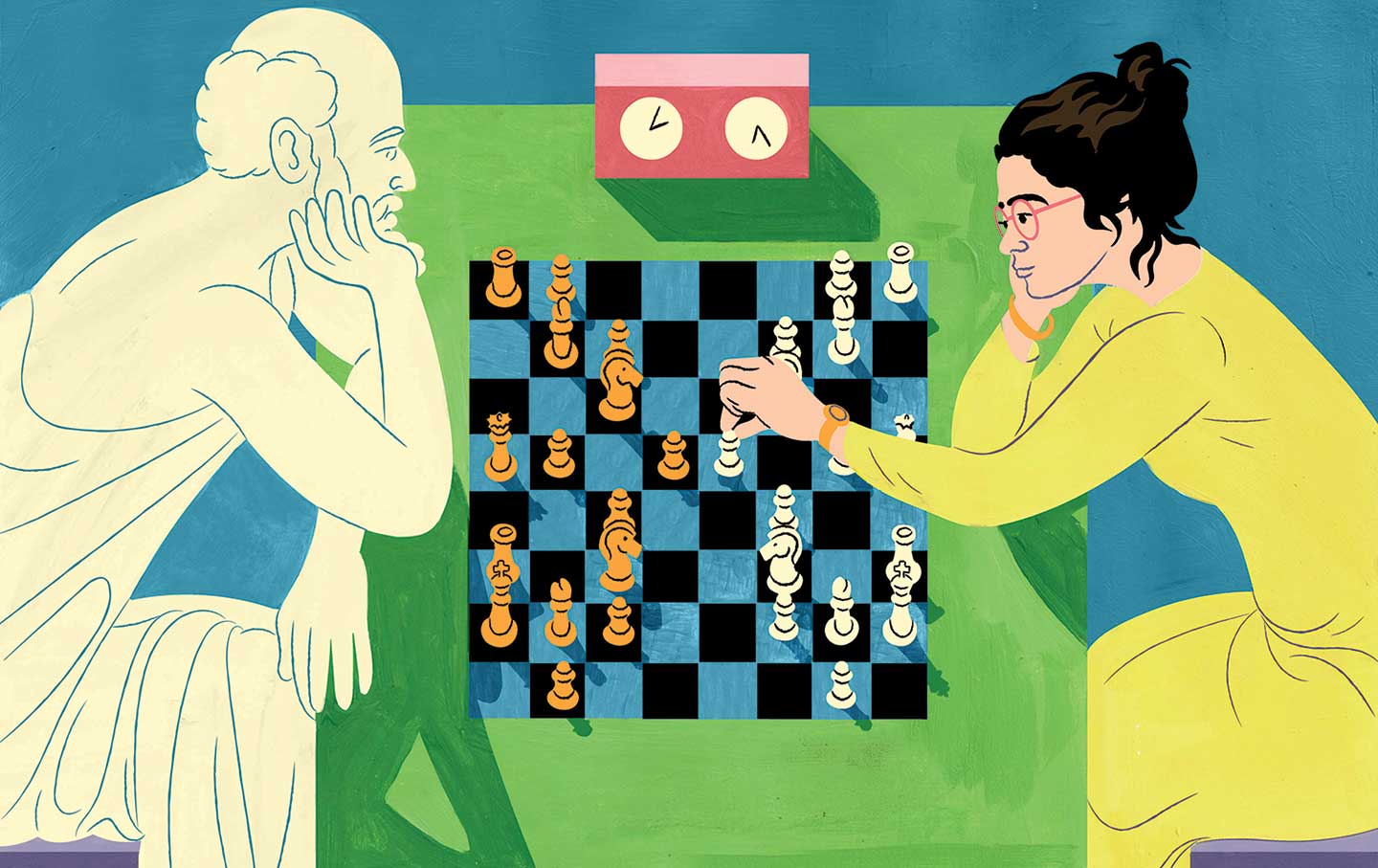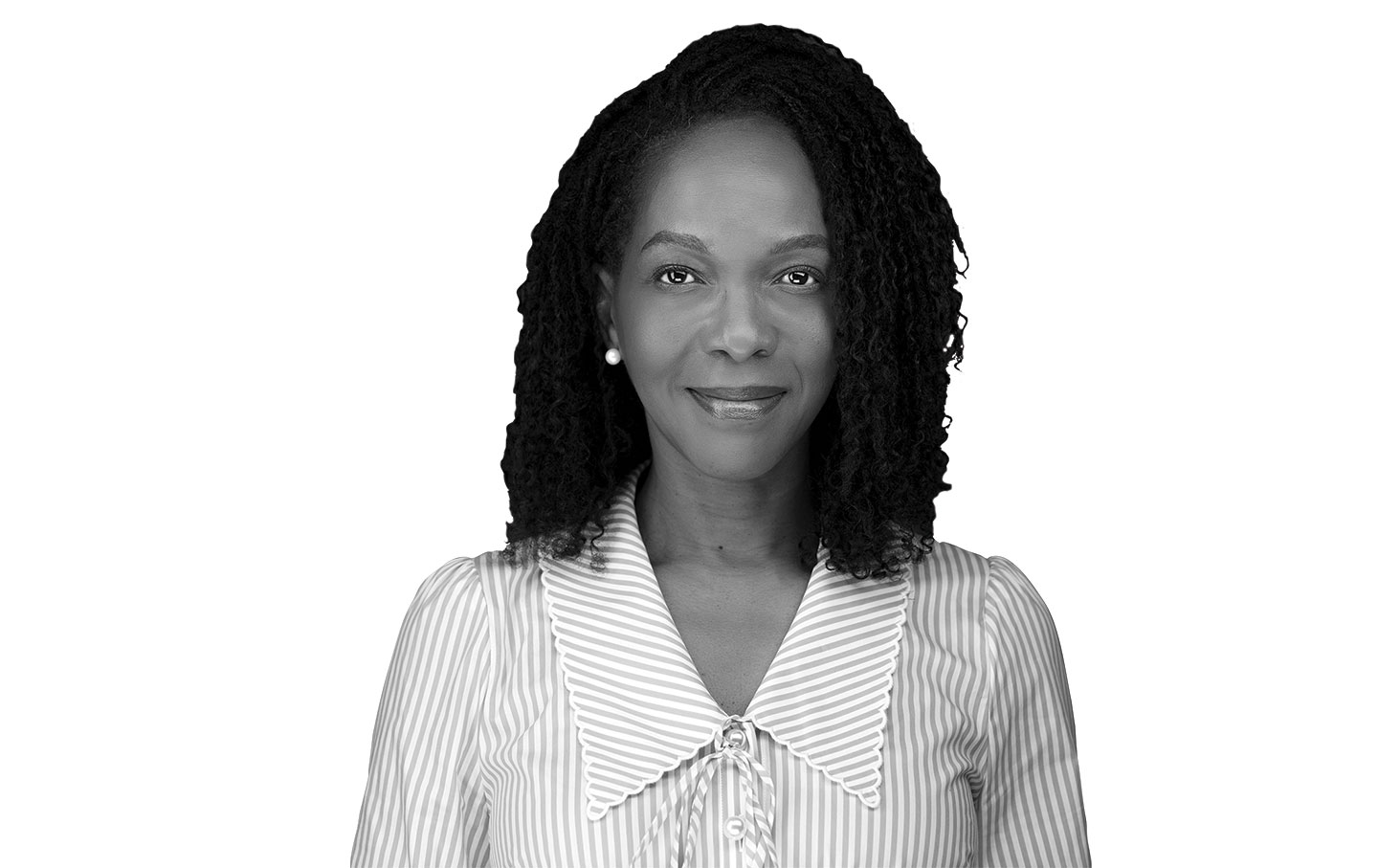The Many Lives of George Eliot
A new biography examines how the novelist chose to make her life, as well as her fiction and art, outside the conventions of the marriage plot.
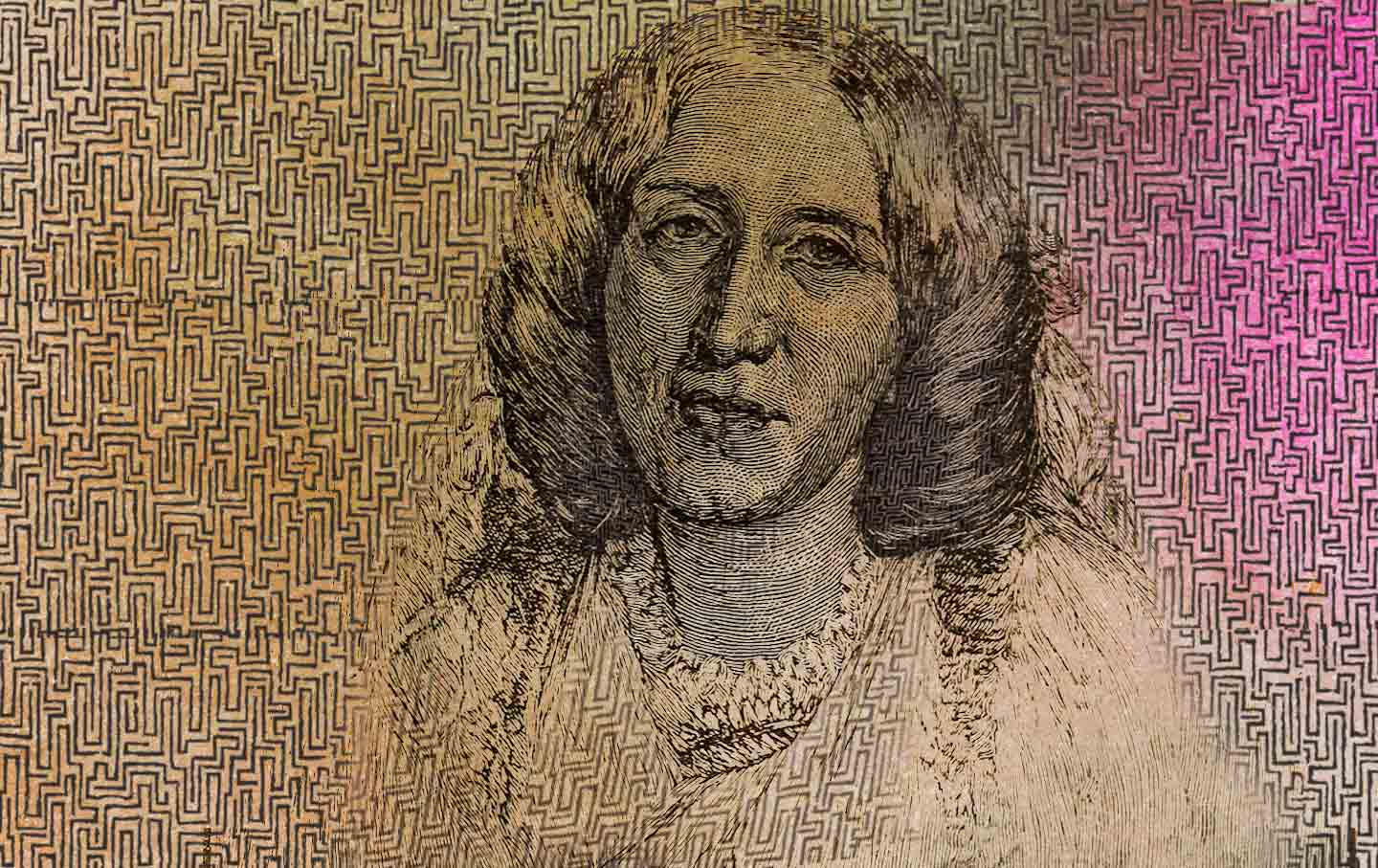
In an anonymously published essay, “Silly Novels by Lady Novelists,” George Eliot set out her objections to “mind-and-millinery” novels: those books featuring dazzling heroines—eloquent, accomplished, almost godly—who set off into the world solely in pursuit of an amiable husband. Castigating the genre for its “drivelling” narratives, clichéd characters, and hackneyed morals, Eliot argued that novels that posit marriage as a woman’s ultimate aim and achievement only “confirm the popular prejudice against the more solid education of women.” In her own writing, Eliot set out not just to rehash the “marriage plot” but to expose and dissect it: Her sweeping novels show her utterly human characters grappling with the harsh disparities between societal expectations of married life and their own, often painful experiences of it.
As Clare Carlisle shows in her fascinating new biography, The Marriage Question, Eliot chose to make her life, as well as her fiction, outside the conventions of the marriage plot. When she published her essay, she was living with George Henry Lewes, a married man who had separated from his wife but was legally unable to remarry. For Eliot, Carlisle argues, marriage was not an ending but an open question, a continuous intellectual and moral inquiry that defined both her life and her work. Her radical departure from the expected scripts of a 19th-century woman’s life made her a pariah in the eyes of many, yet it also spurred her to embrace new literary possibilities. Standing not quite within the institution but not quite outside it, Eliot was able to write about marriage, as Carlisle puts it, “with the tenacity of a great philosopher, as well as the delicacy of a great artist.”
“A Note on Names,” near the start of the book, offers a deft overview of the many transformations Eliot underwent across her life. She was born and baptized in Warwickshire in 1819 as Mary Anne Evans; her father, who managed the estate of a local baronet, sent her to local boarding schools from the age of 5 to 16 to care for her ailing mother. After her death, Eliot stayed on to keep house for her father, and when she was 21, they moved to Coventry. There, she fell in with a group of radical thinkers led by Charles and Cara Bray, whose spirited debates on politics and religion precipitated a crisis in Eliot’s own Christian faith. While she maintained an outward expression of piety until her father’s death in 1849, she began to translate David Strauss’s The Life of Jesus, Critically Examined, which questioned the factual basis of the Bible, from its original German into English.
In 1851, following a brief and recalibrating solo period in Switzerland, Eliot moved to London and changed her first name to Marian. The subtle shift announced a new beginning. In the capital, Eliot joined the Westminster Review, a left-wing journal founded by Jeremy Bentham, previously edited by John Stuart Mill, and recently acquired by John Chapman, a friend from Coventry who had published her translation of Strauss. Chapman was determined to create a platform for the latest thinking on science, politics, religion, and society, and he found in Eliot one of his most valued writers of caustic commentary as well as a skillful editor and business manager. The experience offered Eliot an apprenticeship in writing and editing as well as in complicated relationship dynamics: She briefly lived with Chapman, his wife, and his mistress, her burgeoning attraction to her mentor seemingly remaining unrequited.
At the Review, Eliot edited dissenting writers, including Harriet Martineau, Herbert Spencer, and Francis Newman, who came together at regular hot-blooded meetings and parties at the Review’s offices at 142 the Strand. In a gathering at a Soho bookshop, Eliot met George Henry Lewes, another of the regular contributors. A lively commentator on philosophy and literature, Lewes had cofounded the radical Leader magazine and was hard at work on a life of Goethe. He was also 10 years into a complicated marriage with Agnes Jervis, who was pregnant at the time, though it was widely known that the pregnancy was the result of a long-term affair that Jervis was having with Lewes’s close friend and coeditor on the Leader, Thornton Hunt. Cheerful, rakish, and with a store of bawdy anecdotes, Lewes was a man to whom Eliot was drawn, after initial distaste, for his originality and intelligence—and given her own recent experience of heartbreak, she was also sympathetic to his delicate situation. “Like a few other people in the world, he is much better than he seems,” she told a friend, “a man of heart and conscience wearing a mask of flippancy.” By early 1854, the two had decided to live together.
Eliot’s relationship, Carlisle tells us, entailed a redefinition of the entire institution of marriage: “by daring to call it a marriage, she was prising the concept from the grip of Church and State.” Although Lewes and Jervis had been living in an open marriage, he never divorced her. Among other reasons, his name was on the birth certificate of Jervis’s first child by Hunt, which may have constituted a legal condonation of the adultery. Nonetheless, in the summer of 1854, Lewes and Eliot absconded to Germany, in an escapade they came to call their “elopement.” Theirs would not be a formal or legal marriage, but Eliot insisted it was still a “sacred bond.” “He is worthy of the sacrifice I have incurred,” Eliot wrote to Chapman, who had remonstrated with her about the scandal she had caused at home. To another friend, she explained that her relationship with Lewes was the one aspect of her life she considered to be “profoundly serious.” By the late 1850s, Marian Evans had changed not only her first name but her second as well: From now on, she told friends, she was to be known as Mrs. Lewes.
In Germany, the Leweses worked side by side, encouraging each other’s writing; Lewes was working on his Goethe biography, while Eliot was writing an essay on Madame de Sablé. Back in England, spurred by the creative stimulation of their partnership, Eliot made her first experiments with fiction. Drawing on her childhood experiences and her exposure to intellectual debates on religious reform, in 1857 she wrote three stories, titled Scenes of Clerical Life, which first appeared anonymously in installments in Blackwood’s Magazine. The following year, the release of the stories in book form marked another name change: Their author was given as George Eliot.
At this point, Carlisle writes, Eliot’s “complex, perhaps fractured identity” had split into two distinct selves, which Eliot chronicled in her diary from opposite ends of the notebook. Both identities were, in a sense, fictions: the first of a legitimate, socially sanctioned wife; the second of a serious and respected male writer. But each identity entailed a fundamental reality, too: Her relationship and her writing had transformed Marian Evans into Marian Lewes and George Eliot, two experimenters who posed major challenges to the social hierarchy.
Those two selves were also profoundly entangled. In many ways, Marian Lewes’s relationship provided her with the conditions that enabled George Eliot’s writing. From the outset, Eliot’s work was a shared endeavor with her partner: Lewes submitted the books to editors on her behalf, negotiated her contracts, and held distractions at bay. Not only did her relationship provide subject matter for her marriage plots, but the complexity of her domestic arrangements also gave her the requisite distance to think critically about the institution, which resulted in her searing indictments of marriages based on illusions or made for imagined gain. Maintaining so many competing identities—and preserving the secret of her authorship—posed a serious ongoing challenge to Eliot’s sense of self. Becoming Mrs. Lewes, Carlisle writes, was not “an easy lapse into social conformity, but a precarious balancing act—and people were watching to see if she would fall.”
Carlisle’s reading of Eliot’s marriage informs and imbues her reading of the novels. As a biographer, Carlisle does not seek to draw parallels between Eliot’s life and art or to establish her fiction’s autobiographical roots. Rather, she probes how Eliot’s experience of marriage played out across her books and her life—how it shaped the concerns she interrogated through her fiction. In Adam Bede, Eliot allows her protagonists the “authorial blessing” of a happy ending: “My soul is so knit with yours that it is but a divided life I live without you,” Dinah says to Adam. Yet in the novella “The Lifted Veil,” Eliot offers an “unexpected sequel,” narrated by the misanthropic Latimer, who marries a woman he doesn’t understand out of an urge to unravel her mystery, only to find that his “repulsion and antipathy harden into cruel hatred,” while his equally dissatisfied wife schemes to poison him.
In Eliot’s fiction, there was no single marriage question and no single answer. Carlisle writes that Eliot saw the subject as “a site for philosophy, even a path towards knowledge”—exemplified most powerfully in her 1871 novel Middlemarch. Questing for a capacious life of the mind, Dorothea Brooke marries the older scholar Edward Casaubon, only to realize that rather than having expanded her intellectual horizons, she faces a life in which her time and talents are wasted. In Daniel Deronda, Gwendolen Harleth decides to marry for practical reasons but finds that her fantasies, vulnerabilities, desires, and wit have to be suppressed to such a degree that her marriage comes close to destroying her. By the end of the novel, the narrator tells us, Gwendolen’s soul has acquired “the nameless something which often makes a woman more interesting after marriage than before, less confident that all things are according to her opinion, and yet with less of deer-like shyness—more fully a human being.”
Carlisle speculates convincingly that some of Gwendolen’s discontentment may have mirrored Eliot’s. By the time she began writing Daniel Deronda, she and Lewes had been married for 20 years—a relationship, like those in her novels, replete with human compromises, complexities, and struggles. Eliot insisted that her marriage helped create the conditions under which she could write, but Lewes’s desire to mediate between her and the outside world could prove overbearing. When a friend wrote that after reading Adam Bede, she had come to the conclusion that the woman she still knew as Marian Evans was its author, Eliot replied: “You are the first friend who has given any symptom of knowing me”—her first public admission of herself as an artist. But even in this moment of joy, her various selves were set in tense opposition. Before she sent her letter, Eliot passed it to Lewes, who added a postscript that hints at a proprietary tendency not quite in keeping with Eliot’s picture of marital harmony. After expressing his pride in his wife and her writing, he admonished her friend: “But, dear Barbara, you must not call her Marian Evans again: that individual is extinct, rolled up, mashed, absorbed in the Lewesian magnificence!” Throughout Eliot’s career, Lewes would continue to represent her to the public world: He would frequently liaise with her editors, shield her from criticism, and keep up the pressure on her to produce more novels. But Lewes’s ambitions on her behalf produced some disquieting moments when his investment in George Eliot seems to have overridden his love and concern for Marian Lewes. He once persuaded her to publish Romola as a lucrative series of shilling installments in a magazine run by his friend, locking her into a year of stressful deadlines and causing a schism between Eliot and her longtime editor.
In her 1983 book Parallel Lives, a revelatory study of five Victorian couples, including the Eliot-Lewes marriage, Phyllis Rose proposed that every marriage is a narrative construct, two colliding imaginations seeking to impose form on the ever-shifting dynamics, events, and conflicts that constitute their separate yet shared lives—an experience, crucially, “presumed to be the same for both.” Though Carlisle tempers Rose’s suggestion that Eliot and Lewes’s relationship was entirely happy, she too suggests that their marriage was sustained as a fortress the pair had built together. Agnes Jervis disappears quickly from their story, though not from the Lewes ledger book; Eliot, in fact, continued to pay her maintenance even after Lewes’s death. Lewes’s children—who began receiving letters at boarding school in which Lewes blithely referred to Eliot as “your mother”—fare worse. Carlisle portrays Eliot as sympathetic but out of her depth as a stepmother, frustrated at herself for the glimmers of resentment she felt toward the boys, two of whom died before their father. There’s a sense here that much has been left unspoken. Eliot once told a stepson that she could not have written her books if she “hadn’t been human with feelings and failings like other people.” “Feelings and failings” is an apt enough summary of Middlemarch, in which the crushing disillusionment that Dorothea faces when she realizes the depth of her mistake could render her unbearably pitiable, if her strength and kindness were not so profoundly and intimately drawn. But Eliot never elaborated on the texture of her marriage to Lewes, even after his death and her subsequent marriage to John Cross, who eventually became her devoted biographer. As she wrote in Romola, “She who willingly lifts up the veil of her married life has profaned it from a sanctuary into a vulgar place.” Eliot took this to a literal extreme with her correspondence with Lewes: The couple’s letters were buried with her in Highgate Cemetery, one final act in a very private marriage.

